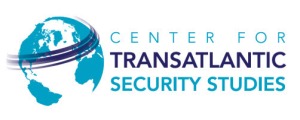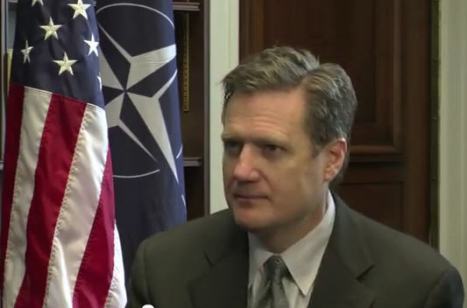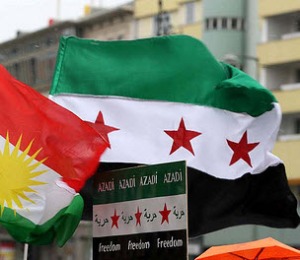In his book, Leaderless Jihad, Marc Sageman presents a bottom up model for al-Qaeda terrorist radicalization, claiming that individual level social factors are responsible for radicalization, to the extent that “al Qaeda had no need for a separate recruitment program”1. He posits that European Muslims are particularly sensitive to radicalization because of an increased rate of failure to assimilate. This basis of this theory is that the logic behind radicalization doesn’t have a lot to do with ideology itself. It is instead connected to social factors such as the influence of family and friends, “it turns out that joining the global Islamist terrorism social movement was based to a great degree on friendship and kinship”2. Max Abrams supports this theory, claiming that “most individuals engage in a cost benefit analysis of whether to participate in an organization based on its personal inducements, which have little if any connection to the organization’s stated goals” and that “many terrorist foot soldiers and even their leaders never develop a basic understanding of their organization’s political purpose”3. Inherent to this model is the idea that ideology is unimportant, and what are important to the radicalization process are friends, family, and social networks. This is why diasporic populations in Europe are more vulnerable to radicalization then Muslims living in their home countries or America4: alienated, they hang out at mosques and join other young Muslim men, eventually going from ‘just a group of guys’ to terrorists.
This theory has been subject to harsh criticism, citing the continued strength of al-Qaeda central leadership, and claiming that what we need to fear is “the realization of strategic organizational decisions al Qaeda made at least a decade ago” and that al-Qaeda is dangerous because:
“Al Qaeda is much like a shark, which must keep moving forward, no matter how slowly or incrementally, or die. Al Qaeda must constantly adapt and adjust to its enemies’ efforts to stymie its plans while simultaneously identifying new targets. The group’s capacity to survive is also a direct reflection of both its resilience and the continued resonance of its ideology,” Hoffman 5.
The supporters of this “grassroots model” do not claim that it extends beyond al-Qaeda. Although Sageman mentions the Irish Republican Army (IRA), and Abrams does support his findings with those concerning the IRA, Euskadi Ta Askatasuna (ETA), the Red Brigades, and the Weather Underground amongst others, this model, which claims to be based on social scientific principles, makes no claim to be anything but very specific and not broadly applicable. But if this model of terrorist radicalization is correct, and “the link between a Diaspora and terrorism appears strong,”6 then what kind of evidence is there for radicalization of European diaspora populations for causes other than Islamist terrorism?
One group which offers a strong contrast to al-Qaeda’s patterns of radicalization in diasporic populations is the Liberation Tigers of Tamil Eelam (LTTE), an ethno-nationalist group based in Sri Lanka. They are listed on the U.S. State Department list of Foreign Terrorist Organizations7, and in their own words, they claim to be “the heart and soul of the Tamil struggle for self-determination” and “ a political organisation as well as a military power, running a de-facto administration in the majority of areas in north-eastern Sri Lanka”8. The group was largely responsible for the thirty year long Sri Lankan civil war and the deaths of 64,000 people9. It has been largely inactive since the death of its leader Velupillai Prabhakaran in May of 2009. The LTTE is one of the most notorious terrorist groups in modern history, having been one of the first to use the tactic of suicide bombing on a large scale. Their “Black Tiger” division is responsible for the invention of the suicide belt, a device widely used by suicide bombers throughout the world today10. At their peak they had between 7,000 and 15,000 armed combatants, and were responsible for the assassinations of Indian Prime Minister Rajiv Gandhi in 1991 and Sri Lankan President Ranasinghe Premadasa in 1993, as well as many prominent Sri Lankan politicians, and attacks on various important military and civilian targets including “naval ships, oil tankers, the airport in the country’s capital of Colombo, and Sri Lanka’s most sacred Buddhist relic, the Temple of the Tooth… Colombo’s World Trade Center and Central Bank.”11
The Tamil population, comprising about 66 million individuals in total12, is dwarfed in size when compared to the world’s 1.57 billion Muslims in the world13. However, like al-Qaeda, the potential diasporic population that could become radicalized is large. Most of the world’s Tamil population, approximately 61 million people, lives in India. However, it is estimated that 150,000 people of Tamil descent live in the UK, of which 67,000 were born in Sri Lanka14. Unlike the Muslim population, there is little evidence of Tamils in Europe or North America becoming radicalized and joining the LTTE as fighters15. Tamils in Europe, who primarily reside in the United Kingdom, face the same factors that are described as leading to radicalization and joining al-Qaeda. Many are refugees, low-income, living away from their families. The social experiences described by Sageman of Muslims in Europe who became al-Qaeda members, “They became separated from their families, friends, and culture, many started to feel homesick and lonely. They also felt marginalized and excluded from their immediate environment,”are just as applicable to Tamils as they are to Muslims16. This indicates that the simple of idea of radicalization as a product of alienation and socialization in diasporic populations is not broadly applicable, at least without other considerations.
The LTTE differ in many ways from al-Qaeda. One of the most prominent of these differences is a stark contrast in ideology and scope. While the LTTE efforts are focused intensely on Sri Lanka, especially its Northern and Eastern Provinces (what they wish to be the nation of Tamil Eelam), al-Qaeda’s vision is for a global jihad an eventual world-wide caliphate. For al Qaeda, nothing is outside of their mandate, for the LTTE, their focus is targeted and intense. One difference is their ideology; al-Qaeda fights in the name of God and religion, which the LTTE is a secular movement which fighting in the name of ethnic nationalism. This means that the appeal of their causes are disparate; al Qaeda’s message, despite the fact that it is widely regarded as too extreme even for other extremists, holds across national borders and has a global base. The LTTE was considered not as extreme by Sri Lankans, but is only fueled by Sri Lankan Tamils, which make up 9-18% of the population of Sri Lanka17. This results in recruiting a larger percentage of a smaller population.
This can also be classified as a difference in the scope of the goal promoted by the ideology. Without getting into the substantive details of their respective ideologies, it becomes apparent that al-Qaeda, a group that sees the world as its battlefield and every Muslim as a potential solider, could be considered an attractive group to join by a more diverse group of people than the LTTE, whose sole purpose is the promotion of nationalism in two provinces of one country. It is this wide-reaching vs. singular focus dichotomy that characterizes the scope of the ideology of al-Qaeda and the LTTE. Had the LTTE chosen to promote a goal with a wider reaching goal, they could have had a much larger reach. Secular ethnic nationalism is a limiting ideology. Wider reaching goals could include an ethnic conflict narrative, as is seen in the Middle East in Kurdish movements in Iraq, Iran, Turkey, and Syria. By branding the conflict as a struggle for nationhood instead of Tamil rights, the Sri Lankan Tamils excluded possible assistance from the 60 million Tamil people living in India18. Another potential framework for a wider reaching narrative could have been characterizing the conflict as a religious one. It would have been possible for the mainly Hindu Tamils to create an ideology based on religious struggle against the mostly Buddhist Sinhalese majority. A broader religiously based ideology, like the one built by al-Qaeda, could have drawn in Hindus from India and the Hindu Diaspora in Europe and North America19.
Another aspect of the scope dimension is how ideology is applied to territory. Both sides use similar terminology of to describe their conflict, with al-Qaeda declaring war against the United States in 1996 and arguing for jihad, which can be translated as holy war20. The LTTE youth organizations similarly use the term “punitha youtham, a “[pure] holy war” to describe the conflict in Sri Lanka21. However, despite this similar use of language, the realities of the conflict between al-Qaeda and America and the LTTE and Sri Lanka are very different. Despite being labeled a terrorist organization, the LTTE controlled large amounts of physical territory in Northeast Sri Lanka and had military capabilities, such as naval and air divisions, that were far beyond al-Qaeda’s. The conflict between the LTTE and the Sri Lankan government is typically characterized as a civil war, and it has received enough international attention, such as attempts to negotiate ceasefires by India and Norway, to justify calling the conflict a full scale war. Al-Qaeda on the other hand, has never controlled significant amounts of physical territory, instead existing in training camps and hideouts in Afghanistan, cells spread across the world, and ever increasingly on the internet. This lack of physical base made al-Qaeda’s ‘war’ a global one, while the LTTE existed in a specific place in Sri Lanka.
One last differing factor between the LTTE and al-Qaeda which may have caused one to have the ability to recruit in Europe but the other to have no support from European populations is the domestic political conditions in their home bases. Despite a decreasing amount of civil rights for the Tamil minority, Sri Lanka was classified as “free” by the organization Freedom House until 1983 (it has been “partly free” since). In comparison, Saudi Arabia has never been classified as “free” or “partly free” since Freedom House began collected data in 1973. Egypt, the most populous Middle Eastern state, has been either “partly free” or “not free”, having been “not free” since 199322. This relative openness may be a pathway for supporters of the LTTE to stay within the country, making support from Europe unnecessary. The authoritarian societies of the Middle East inflict harsh punishments upon those who support terrorist groups, providing incentive for terrorist sympathizers to leave the country and disincentive for those within the country to support terrorism. The freedom of Europe allows al-Qaeda the ability to plan operations under conditions where the government has limits on its ability to imprison and conduct recognizance within its own borders. Additionally there is less potential cost for becoming radicalized in a European country; where there are strict rules on the justice system, than in the Middle East, where habeas corpus doesn’t necessarily exist23.
Overall, the differences between al-Qaeda and the Liberation Tigers of Tamil Eelam can be summarized as a difference in the scope of their ideologies. Al-Qaeda’s vague and unrealistic goals have the possibility of appealing to any Muslim in any country, while the LTTE’s specific goals are only likely to appeal to Tamil people in Sri Lanka itself. The idea of socialization being a pathway to radicalization is not necessarily precluded by this conclusion, but it shows that there are many other factors that lead to terrorism, and that it may not be possible to find a simple answer to the question of why people become terrorists. These differences show that ideology does matter in terrorist radicalization, and that the simple answer of alienated people who create social ties may not be so simple. Recognizing such restrictions may have counterterrorism implications, such as determining where to focus counterterrorism efforts. While it may be possible for a group like al-Qaeda to operate anywhere, and thus counterterrorism efforts should be done everywhere, it is unlikely that group like the LTTE that has a specifically focused ideology will have much of a foothold outside of its area of focus, thus making counterterrorism efforts against the LTTE in places like North America or Europe lower priority that efforts in South Asia. Additionally, as history has shown, this may be a reason why al-Qaeda has survived the death of many of its leaders and continues to be a threat after the death of Bin Laden, but why the LTTE has become essentially defeated after the death of its leader Velupillai Prabhakaran.
Jessica Ward is a Research Intern at the Conflict Records Research Center, Institute for National Strategic Studies. Ms.Ward is a senior Political Science major with Interdisciplinary Honors in International Security Studies at Stanford University.
Endnotes
1. Sageman, Marc, Leaderless Leaderless Jihad: Terror Networks in the Twenty-First Century, University of Pennsylvania Press, 2008, 70
2. ibid, 66
3. Abrahms, Max, “What Terrorists Really Want: Terrorist Motives and Counterterrorism Strategy”, International Security, Vol. 32, No.2, Spring 2008, 95, 99
4. There are many reasons why European immigrant populations are more prone to radicalization than American ones are. Possible explanations include harsher American visa requirements, and thus the ability to hand pick professionals and intellectuals for immigration and not allow in those who may be vulnerable, the relative weakness (or non-existence) of the American welfare system, which allows unemployed Europeans to spend their time on terrorist activities, but in America, “by the time American young Muslims sympathetic to the jihad get home from work, they are too exhausted to do much,” as well as the American national myth of the “melting pot,” which serves as a mechanism for assimilating immigrants, as opposed to the European national myths of a “national essence” (Sageman 90-102).
5. Hoffman, Bruce, “The Myth of Grassroots Terrorism”, Foreign Affairs, May/June 2008
6. Sageman, 65
7. U.S. State Department, “List of Foreign Terrorist Organizations,” 27 January 2012, http://www.state.gov/j/ct/rls/other/des/123085.htm , accessed 25 July 2012
8. “About Liberation Tigers of Tamil Eelam,” http://www.eelam.com/ltte, accessed 25 July 2012
9. Hussain, Syed Rifat “Liberation Tigers of Tamil Eelam (LTTE): Failed Quest for a Homeland”, in eds. Mulaj, Kledja, Violent Non-State Actors in World Politics, Columbia University Press, New York, 2010. 381
10. Bhattacharji, Preeti “Liberation Tigers of Tamil Eelam (aka Tamil Tigers) (Sri Lanka, Separatists),” http://www.cfr.org/terrorist-organizations/liberation-tigers-tamil-eelam-aka-tamil-tigers-sri-lanka-separatists/p9242 , 20 May 2009, Council on Foreign Relations, accessed 25 July 2012
11. Hussain, 384
12. Ethnolouge, “Tamil,” http://www.ethnologue.com/15/show_language.asp?code=tam; accessed 25 July 2012. This defines a Tamil person as a speaker of the Tamil language. While there can be other definitions, this is the one with the most reliable data.
13. Pew Research Center, “Mapping the Global Muslim Population: A report on the Size and Distribution of the World’s Muslim Population”, 7 October 2009, http://www.pewforum.org/Mapping-the-Global-Muslim-Population.aspx
14. Dissanayke, Samanthi, “UK Tamils Polarised by Powerful,” British Broadcasting Company, 8 December 2008, http://news.bbc.co.uk/2/hi/uk_news/7742134.stm, accessed 25 July 2012. The United Kingdom does not keep data and race and ethnicity at the levels of the United States, but it does keep data on the country of birth of its citizens. 150,000 figure and estimate, 67,000 figure from the 2001 census.
15. There is evidence of some financial support from European and North American Tamils. “Members of the Tamil community abroad say the culture of fear that surrounds such tactics is enough to coerce them to fund the LTTE. The U.S. State Department says the LTTE has also used charitable groups, like the Tamils Rehabilitation Organization, as a front for fundraising. These forms of funding have made the LTTE one of the wealthiest militant organizations in the world.” Bajoria, Jayshree, “The Sri Lankan Conflict,” http://www.cfr.org/terrorist-organizations/sri-lankan-conflict/p11407 , Council on Foreign Relations, 18 May 2009, accessed 25 July 2012.
16. Sageman 68
17. 8.5% by ethnicity, 18% by language. CIA World Factbook, “Sri Lanka,” https://www.cia.gov/library/publications/the-world-factbook/geos/ce.html, Central Intelligence Agency, 13 July 2012, accessed 25 July 2012.
18. India did support the LTTE early on in the conflict, with LTTE members being armed and trained by the Indian Research and Analysis Wing (RAW) in the early 1970s. There were also alliances between the LTTE and secessionist groups in Tamil Nadu. Both of these withdrew support from the LTTE in the early 1980s. Bajoria
19. Despite Hinduism’s reputation in the West as being non-violent, there is substantial evidence of violence associated with Hinduism in modern India, including the destruction of the Babri mosque in Ayodhya in 1992, the 2002 Gujarat riots, and growing anti-Christian and right wing Hindu extremist violence.
20. Bin Laden, Osama, “Declaration of War against the Americans Occupying the Land of the Two Holy Places,” http://www.pbs.org/newshour/terrorism/international/fatwa_1996.html, PBS Newshour, August 1996, accessed 26 July 2012. A more literal translation of jihad is struggle, thus its use in Islamic religious rhetoric which argues for the promotion of “the greater jihad,” an internal struggle.
21. Wilson, A. Jegaratham, Sri Lankan Tamil Nationalism: Its Origins and Development in the 19th and 20th Centuries, 2000, London, C. Hurst Co.
22. Freedom House, “Freedom in the World, 1973-2012,” http://www.freedomhouse.org/report-types/freedom-world, accessed 25 July 2012. India and Western Europe are considered “free” for most years in this period.
23. This argument can be found in Huckabey, Jessica M. and Mark E. Stout, “Al Qaida’s Views of Authoritarian Intelligence Services in the Middle East,” Intelligence and National Security, Vol. 25, No. 3, 327–349, June 2010










You must be logged in to post a comment.